Sine Saloum tourist attractions and its surrounding areas

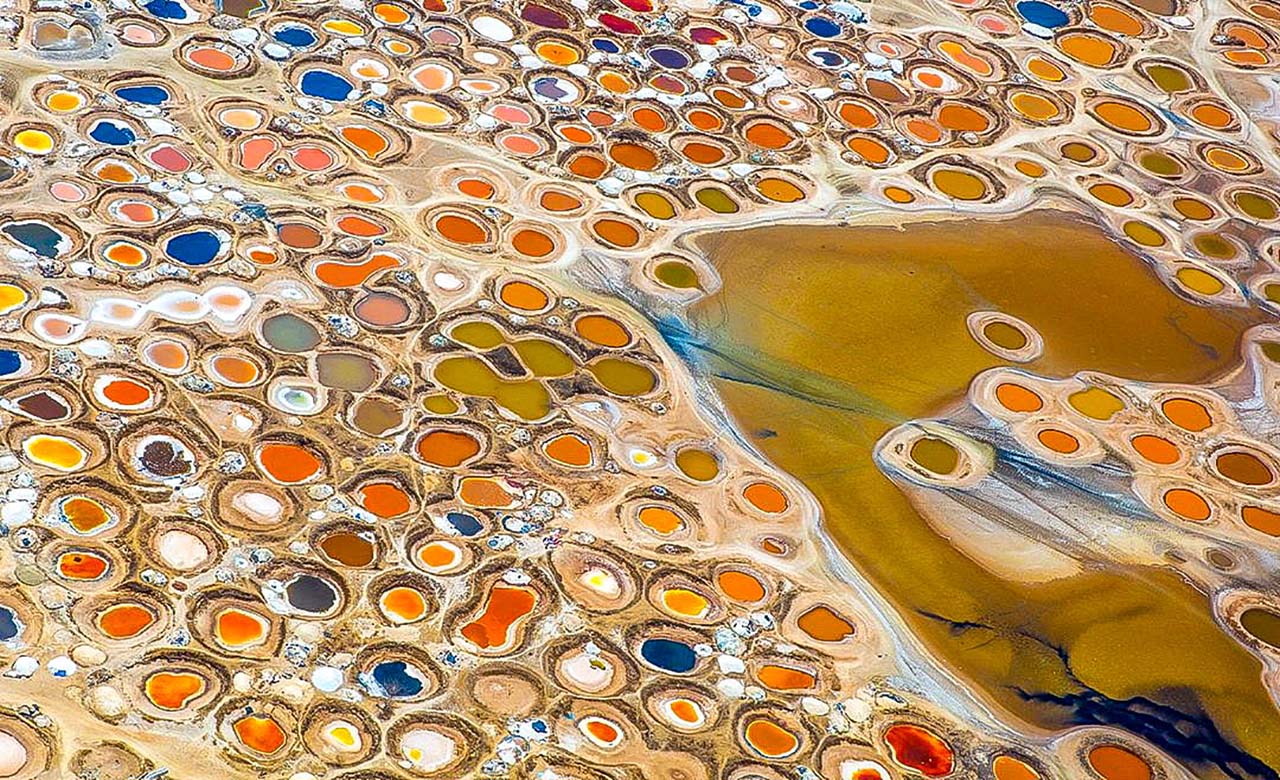
The sine Saloum is a hybrid well preserved territory that is colored with undeniable magic and which ranked amongst the most beautiful bays in the world. It is spread over a surface area of 180,000 hectares. It is a delta formed by the confluence/convergence of two rivers; Sine and Saloum Rivers. The landscapes are sublime, endowed pure air and there is total calm here. The Sine-Saloum Delta site is classified as a UNESCO World Heritage site. Full of history and culture, the Sine-Saloum Delta is made up of several magnificent islands and islets in the heart of a veritable labyrinth of mangroves that spread as far as the eyes can see. It is endowed with a huge natural heritage that must be kept intact. It is a privilege reconnection place for ecotourism enthusiasts and a paradise for fishermen and birdwatchers. About 400 bird’s varieties are listed, including the largest nesting colony of royal terns in the world. Nearly 114 species of fish (barracudas, groupers, carp, oysters, etc.) find refuge there. The Sine-Saloum Delta also has a biosphere reserve that hosts a wide variety of migratory birds and mammals (Hyenas and Jackals, Monkeys and Warthogs, Dolphins and Manatees), and reptiles (Turtles, Lizards, and Crocodiles). The Sine-Saloum together with its magnificent lagoons, islands, and islets are calling for seductive pirogue rides and offer unforgettable moments to visitors.
The Mar Lodj Island
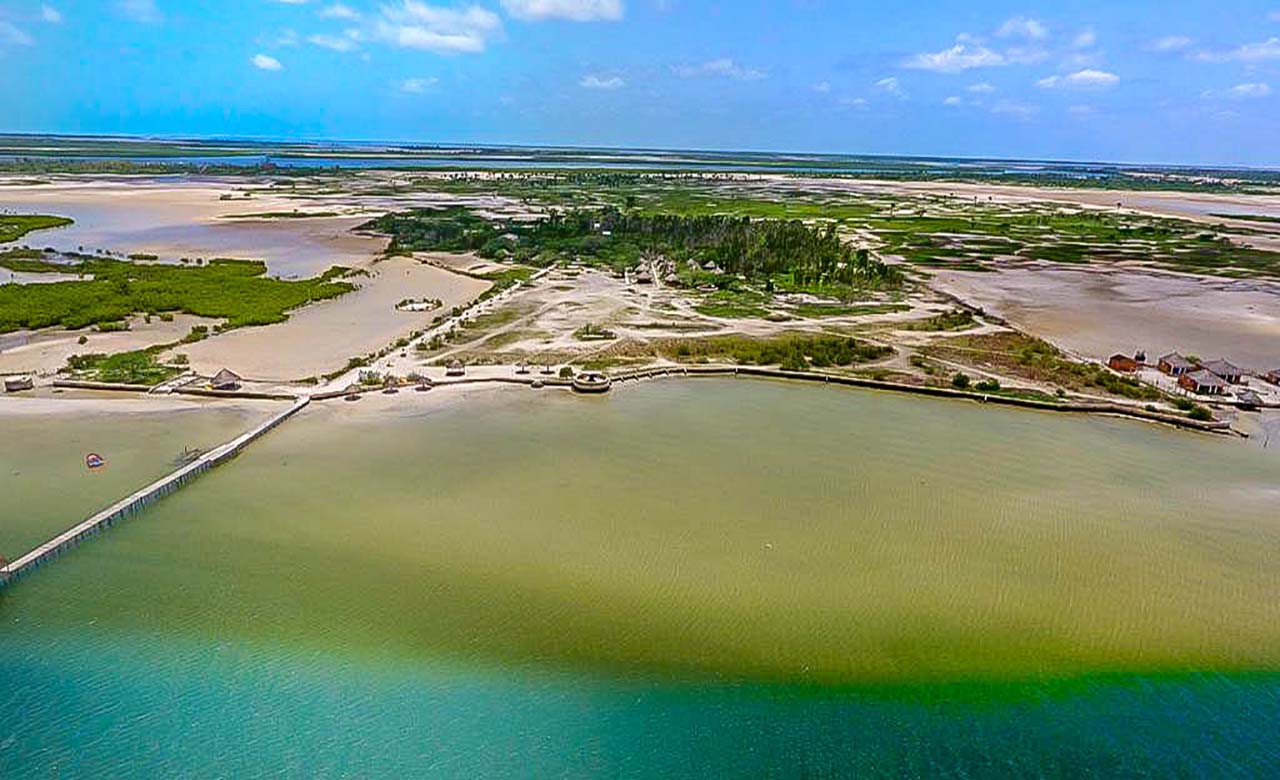
It is located in the Saloum Delta. The Mar Lodj or Mar Lothie Island is exceptional in both natural as well as the human plan. Between its bolongs, lagoons, sand dunes and its proximity to other beautiful places, this island has a very rich ecosystem and huge tourist potentials. Canoe trips, fishing trips to Toubacouta which is a fishing village, moonlight carriage rides through the sand dunes and escapes to the shell islands in the middle of the millennia baobabs, bird watching is a must. Tasting of traditional dishes immerses you in the culinary of the region.
Bamboung Marine Protected Area
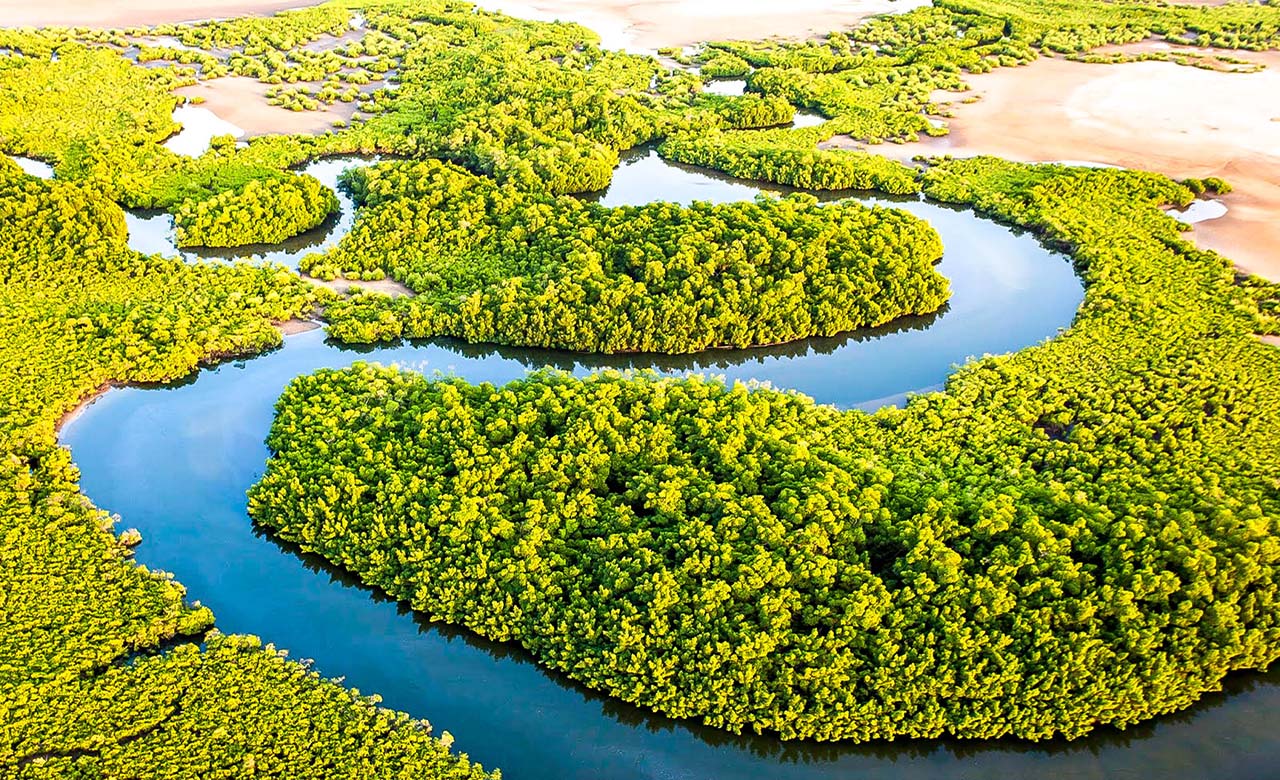
The Bamboung Marine Protected Area is located on the Bamboung Bolong, near Toubacouta in southern Sine-Saloum. It covers an area of nearly 7.000 ha and about 72 fish species are recorded there. It is an exceptional site with dense mangrove and a landscape composed of majestic baobabs, a central marine area with a length of 15 kilometers and an area of about 3 km², the presence of a significant water table which creates a favorable environment to the aquatic fauna. The vegetation is abundant and different mangrove species have developed there.
Ornithology in the Sine-Saloum
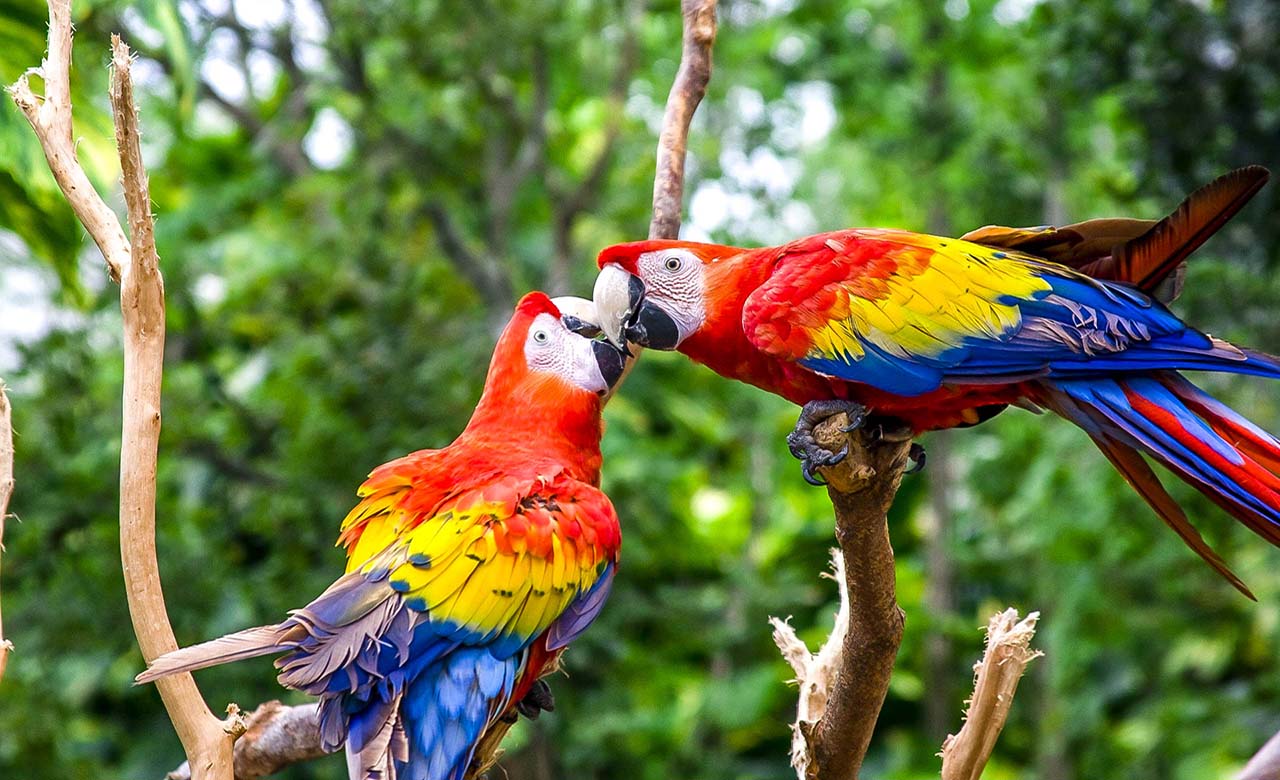
The thousands of islands and islets of the Delta Saloum separated by bolongs serve as a refuge for rare and even endangered bird species. Among these birds are numerous waders, large colonies of Ardeids and Laridae families. Depending on the seasons and the ecosystems of the parks, we can see the ravenous eagle, the blue-bridged kingfisher, the sacred ibis, the Goliath Heron, the African palm swift, the scarlet bee-eater, the bee-eater, the Blue Belly Rollier, the mocking gull, the dwarf flamingo, the dimorphic egret, the pelican, the youyou and the Abyssinia hornbill just to name
a few. The Sine-Saloum is a paradise for birdwatchers, as it is home to bird species that are among the most popular species of ornithologists.
Kitesurf on the Saloum Islands
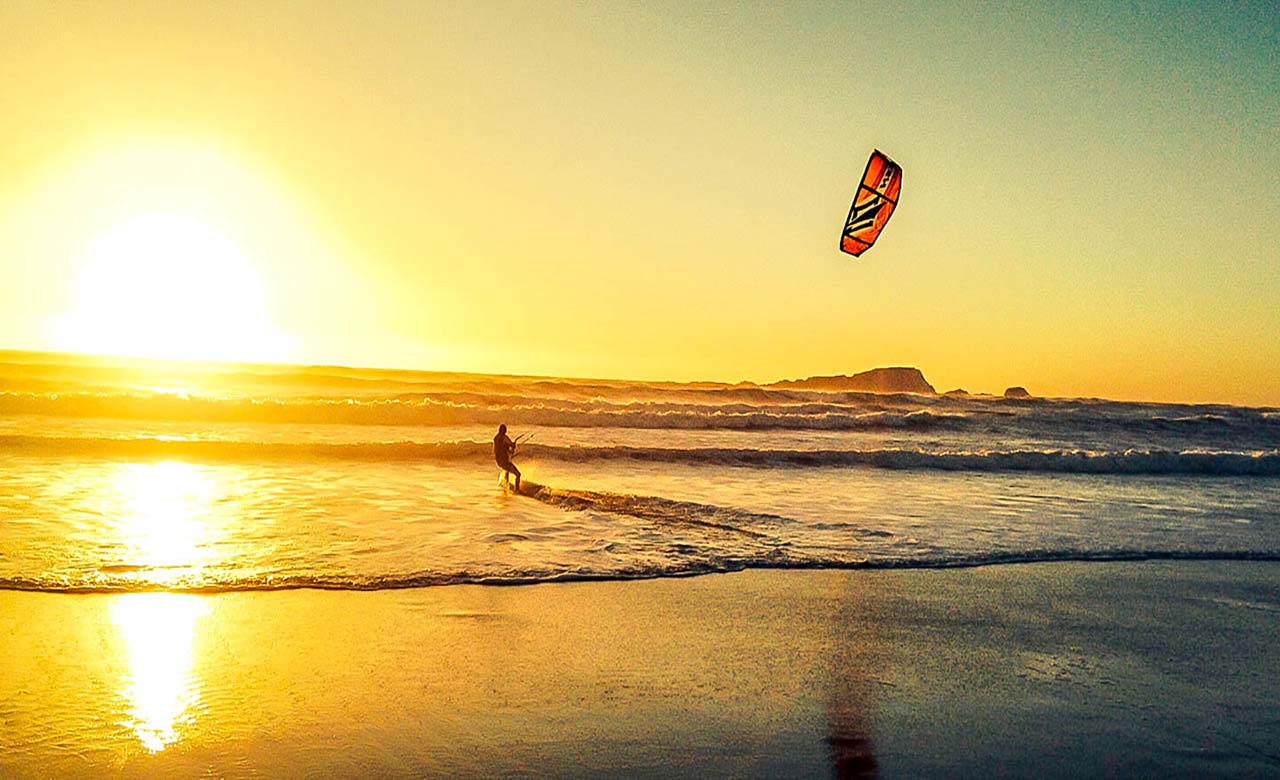
It is located in the south of Djifère, in the Saloum Islands. Thanks to the trade winds and the Harmattan winds, adventure lovers will discover unique spots, lined with baobabs, in a multitude of bays. Between the Djifère and Sangomare Island, one can observe a bar of extraordinary waves with a very strong current depending on the tides. The Saloum Islands are by surfers who come from all over the world to get a view.
Senegalese wrestling
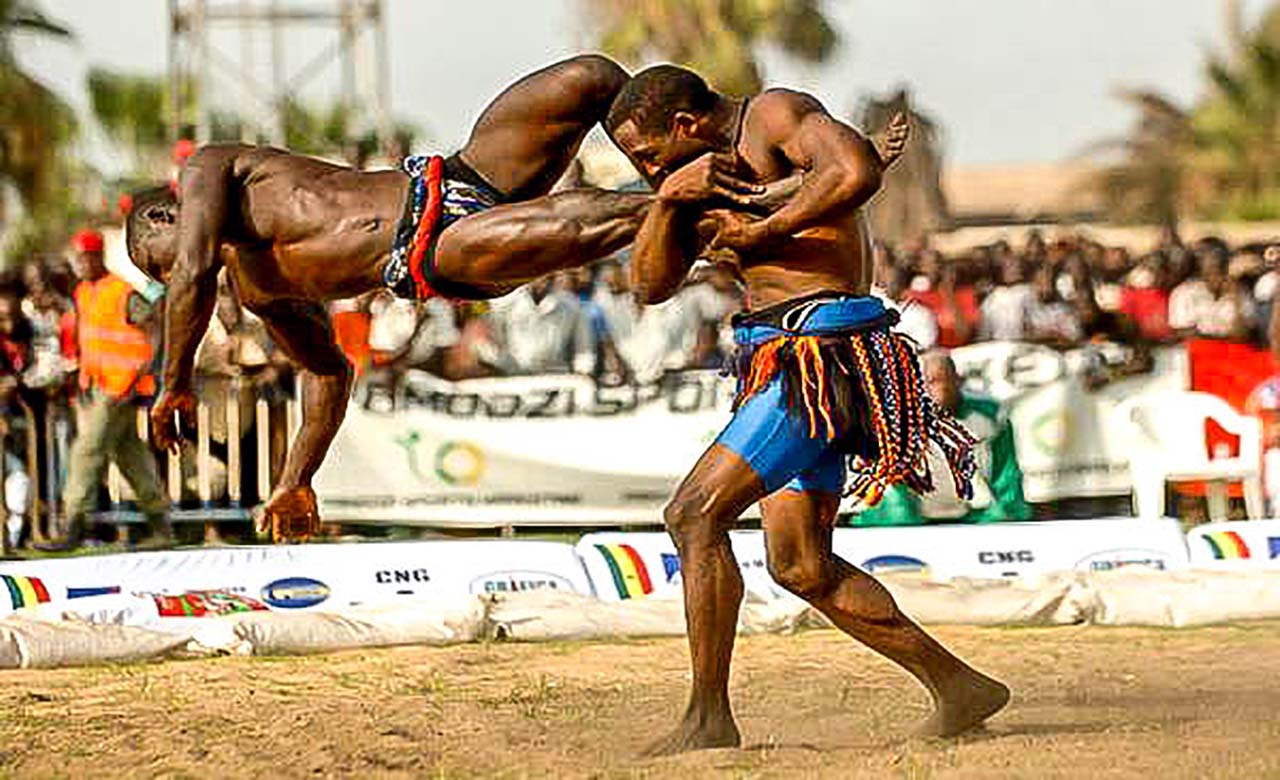
The Senegalese wrestling is very popular and remains the traditional sport par excellence of the Senegalese people. It enjoys a particular craze and allows to live one of the most deeply rooted moments of the Senegalese culture. In Sine-Saloum, traditional wrestling is usually organized during ceremonies such as the end of harvest, the end of rainy seasons and many others. At the percussions rhythm, songs, and dances, the wrestlers stand in front of each other and are acclaimed by an extraordinary audience. The fight takes place in a circle delimited by sandbags.
Both wrestlers compete and each tries to trip his opponent. The first who puts his four supports on the ground, who lies on his back or who is ejected out of the circle is declared loser. In the past, traditional wrestling was a rhythmic celebration organized after a bountiful harvest or after good fishing. The aim of these tournaments was to determine the best wrestlers in the villages. Today, the traditional struggle has been modernized and professionalized, important investments have been made which allow the wrestlers to compete at the international level.
The Fathala Reserve (Walking with lions)

The Fathala Reserve is a wildlife sanctuary located in the south of Senegal, in the region of Fatick. It was officially opened in 2003 and covers a surface area of 2,000 hectares. This reserve is rich in plant and animal species, there are about 400 plant species. Walking with lions, touching them is one of the most popular attractions of the reserve. The reserve is home to eland Derby, Cape eland, warthogs, several antelope’s varieties, zebras, giraffes, monkeys, buffaloes, a multitude of birds and many other animal species.
Fishing in the mangrove

Senegal is one of the most popular fishing destinations in the world. The waters of Senegal are renowned for their wealth and are among the most fish-rich in the world. The diversity of the aquatic environment is impressive and abounds with consistent fish species. From the Cape Verde peninsula, through the warm waters of Casamance and the Sine-Saloum bolongs, there are various species such as sharks, jacks fish, dolphin fish, red carp, marlins, swordfish, sea trout, tuna, bass, barracudas, groupers, captains and more. Three different fishing grounds are offered to sport
fishermen from all over the world: sea fishing, mangrove fishing, and river fishing. Many well-equipped sport fishing clubs, consisting of professional and excellent fishing guides offer a large number of excursions suitable for beginners, intermediates and advanced fishermen.
Pirogue rides
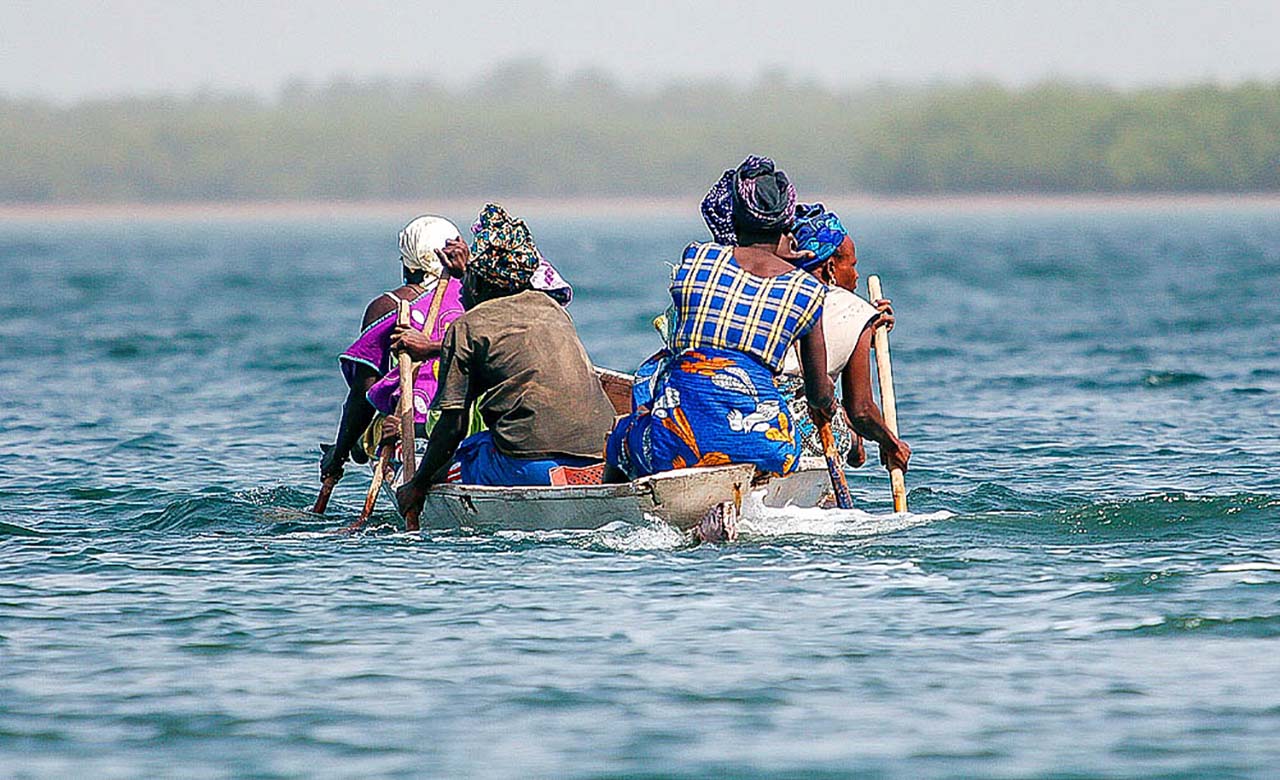
Canoe trips allow the discovery of the Saloum Delta, its bolongs and many islands. Organized excursions permit to meet the Niominkas or Sérères fishermen and to share in the way of life of their villages during a day. The shellfish island, the bird island and the bird sanctuaries are also to be discovered aboard the dugout canoes. The pirogue tours can be booked for a day or half a day. Islands such as the Mar Lodj Island, the bird island, the Palmarin’s bolongs in the ocean and many other circuits will not leave you indifferent, they will take your breath away.
The multi-colored salt wells of Palmarin

Located at the entrance of the Palmarin village, multi-colored plastic spreads are scattered in the lagoons and harbored trapped salt, creating platforms of black, green, orange, yellow or white color shades which offer extraordinary sights to visitors. An aerial view of these wells looks like an extraordinary territory with abundant colors in a magical setting that invade your mind. In Palmarin, salt exploitation is an additional source of income for a majority of the population. Salt is collected from dugout wells and are heaped up under tarpaulins, dried, bagged and sold. Palmarin is also an
important ornithological site with nearly 80 species of birds including migratory species and a permanent dormitory site of flamingos.
The Royal Museum of Diakhao Sine
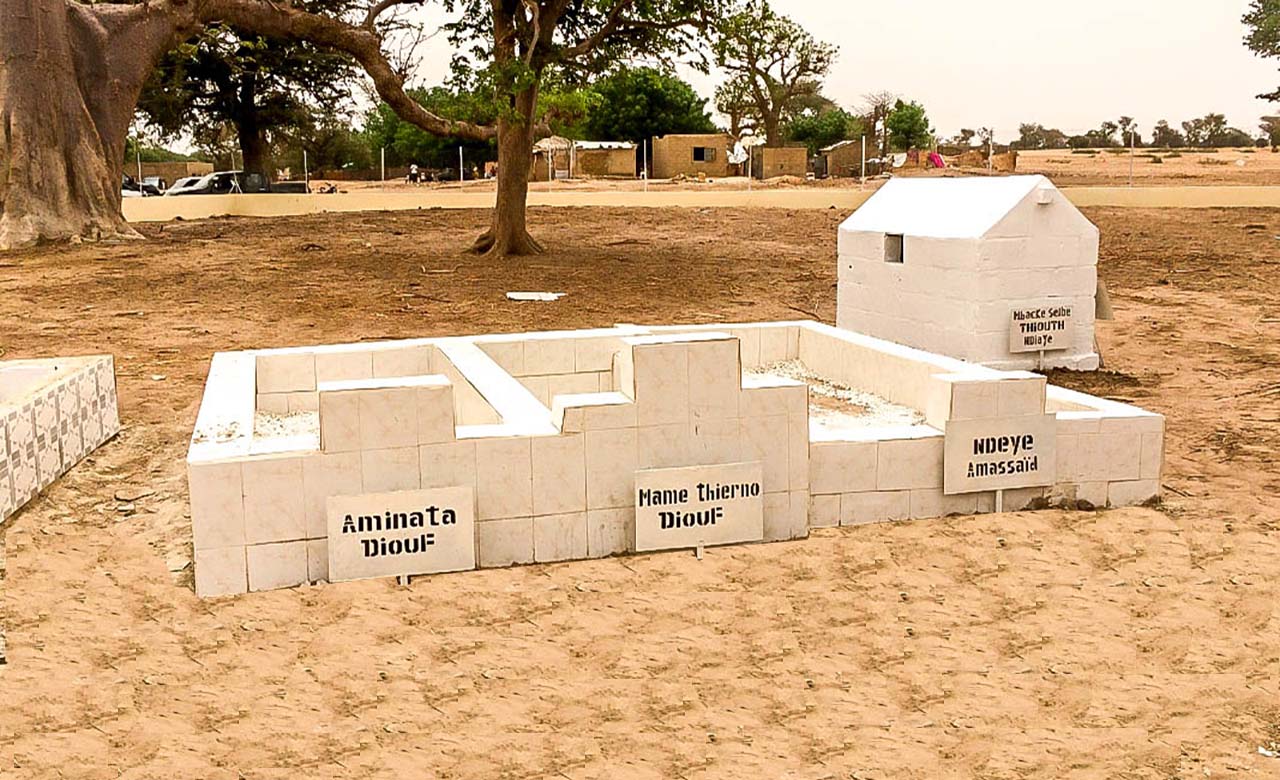
Nestled in the heart of the Fatick region, Diakhao is the last capital of the Sine kingdom. It still houses the remains of the kingdom and is classified as a UNESCO heritage. At the entrance of the village stands the Royal House. As soon as one crosses the gate, each square meter of the concession evokes the rich Sine history and the various mausoleums of the kings plunge the visitor into a meditation atmosphere. The eco-museum includes an exhibition room that traces the history of the region with a highly structured organization, whose reign died in 1969, after 600 years of
rule over the Sine-Saloum region. Another reception room, both built in respect to the standards of traditional architecture and ecological aspects. The project realization also led to the restoration of the queens’ tombs scattered on the site, but also the identification of those of the other lineages and the creation of four reception desks and tourist information. It is part of the cultural heritage inventory program started in 2012.
The Queen of the Sipo Island

The island of Sipo is a small picturesque village of a hundred inhabitants and has the particularity of being led by a queen (Fatou Mané). She is different from others as she reserves a warm welcome to visitors in her grass hut. Aged over 85, she is the custodian of the sacred wood and her story is closely linked to the creation of the village in the early twentieth century. The Queen of Sipo is a cheerful and funny personality who gladly and voluntary welcomes visitors on courtesy visits. Endowed with mystical powers, she is a healer, is at the head of the places of worship/prayer and assists the women in the village during deliveries. A little tired in view of her age, she delegates
some important responsibilities to her eldest son. The Sipo Island abounds with unusual beautiful beaches. Do not forget to bring your bikinis for a good relaxation, as well as donations for the inhabitants of the village (pens for children, etc.) but not obligatory.
The megalithic circles of Nioro du Rip
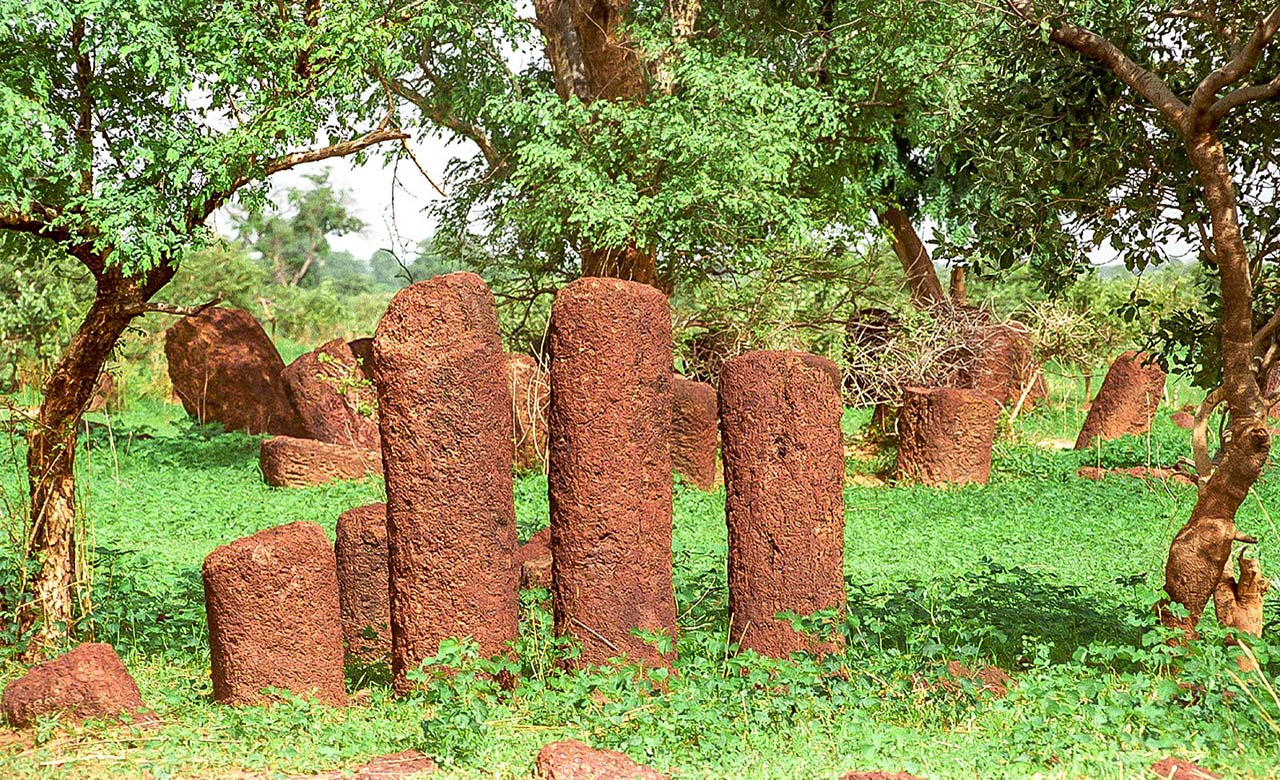
The Delta Saloum National Park

